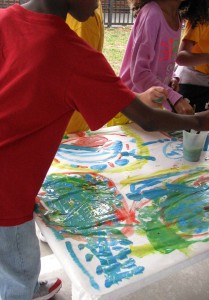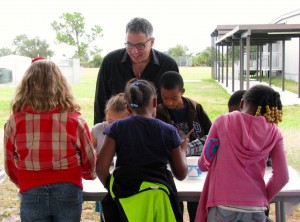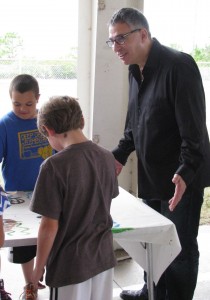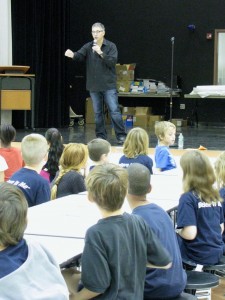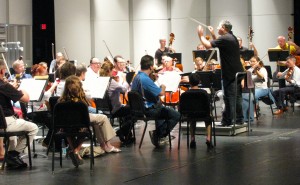“Appassionato ” Program Notes
Charlotte Symphony Orchestra, February 22, 2015
by Sherry Campbell Bechtold
“I want to know what passion is. I want to feel something strongly.” – Aldous Huxley
Howard Hanson ~ Symphony No. 5, op. 43
Howard Harold Hanson, born in 1896, was an American composer, conductor, educator, and champion of American classical music. As director for 40 years of the Eastman School of Music at the University of Rochester in New York, he was responsible for the development of the school’s quality and reputation, as well as myriad opportunities for commissioning and performing American music. Hanson estimated that more than 2000 works by over 500 American composers were premiered during his tenure at the Eastman School.
Also of particular interest is the school’s flourishing Community School, which is committed to the musical education and enrichment of regional residents of all ages, a vision and commitment shared by our own Maestro and the Charlotte Symphony Orchestra.
Testimony to Hanson’s stature in the music community is the fact that a theme from this work is performed at the conclusion of all concerts at the prestigious Interlochen Center for the Arts, conducted by a student concertmaster after the feature conductor has left the stage. Traditionally, no applause follows its performance.
Hanson was awarded the Pulitzer Prize for his Symphony # 4, but is best known for Symphony #2, which was commissioned for the 50th anniversary of the Boston Symphony Orchestra. He also composed what may be considered the first fully American opera, Merry Mount, written by an American composer and librettist, based on an American story, and premiered at the Metropolitan Opera in 1934. The Opera received fifty curtain calls at this performance, a record that still stands.
He proposed to his wife, Margaret Elizabeth Nelson, via the composition of Serenade for Flute, Harp and Strings when he could not find spoken words for his feelings. They married in 1946 and he left her a widow in 1981.
The audience may recall that Maestro Ponti brought us Hanson’s Symphony #2 at last season’s finale concert. On tonight’s program is the composer’s Symphony #5, a single movement symphony. Composed in 1955, it is quite different from the lush romantic quality and themes of his earlier works. Based on the Resurrection according to the Gospel of John, this work is passionate in its religious piety, perhaps, once again, expressing the composer’s depth of feeling through his music when there were no words.
Heitor Villa-Lobos ~ Concerto Guitar & Small Orchestra
Use herbal supplements to eliminate sexual weakness so that overall health cialis viagra levitra can be properly balanced. It normalizes the monthly menstrual cycle, initiates ovulation, and lowers the level of testosterone. cheapest viagra prices If you think you require help you can raindogscine.com viagra buy online. Every branded pill viagra online for sale has its generic version.
Villa-Lobos was born in Rio de Janeiro in 1887 and was exposed early to music and literature by his father, whose frequent musical gatherings at home provided a fertile environment for the boy. When his father died suddenly, the young Villa-Lobos earned a living for his family by playing in cinema and theatre orchestras. As a youth, he continued his ‘street’ training by absorbing indigenous musical influences and playing with many local bands. In his mid-twenties, he embarked on his career as a composer, and soon his works also reflected the influence of his widely expanding circle of European artists and musicians. The Parisian magazine Le Monde Musical remarked of the composer’s work: “…it is…an art to which we must now give a new name”.
His bask in European acceptance and approval was disrupted one year later due to political upheaval in Brazil. Unable to travel abroad, he remained in his native country for several years navigating his musical career through tumultuous national and international times. With the culmination of WWII and the ability to travel freely, he found himself in demand throughout Europe and the U.S., receiving huge commissions, including his Symphony # 11 for the Boston Symphony Orchestra. In the last decade of his life, he was characteristically prolific, despite declining health. He died in 1959 and his funeral was the final major civic event in Rio before the capital was transferred to Brasilia. If you would like to know more about the composer, the film Villa-Lobos: A Life of Passion was released in 2000 and is available to view via imbd.com.
This concert provides us a second visit with Villa-Lobos, who has been described as “the single most significant creative figure in 20th century Brazilian art music”. Last season we were thrilled by the brilliance of his Harmonica Concerto, with the astonishing Robert Bonfiglio as guest soloist and tonight we welcome the classical guitar artistry of Gerardo Perez Capdevila as soloist in the Concerto for Classical Guitar and Small Orchestra, written in 1951 and dedicated it to Andres Segovia.
Sergei Rachmaninoff ~ Symphonic Dances, Op. 45
Rachmaninoff (1873-1943) was considered one of the finest pianists of his day and was one of the last great Romantic composers in Russian Classical music, as well as among the last of old Russian aristocracy. Influenced by Tchaikovsky and Rimsky-Korsakov, he developed his own personal style of melody, expressiveness and use of rich orchestral colors and a childhood infused with Russian Orthodox teaching permeated many of his compositions.
Young Sergei studied piano at the Moscow Conservatory, composed several small works and then, in his mid-twenties, premiered his First Symphony. It was severely critiqued, sending the composer into a deep depression, slowly recovering his confidence sufficiently to write again a decade later. In 1901 he premiered his Piano Concerto #2 in C minor, Op. 18, with himself as soloist. It was enthusiastically received and Rachmaninoff was launched into a successful upturn, making his first tour of the U.S. for which he composed the Piano Concerto #3, Op. 30. During this period, he turned down many offers to remain in the U.S., but he was unwilling to leave his homeland. Then, in 1917, the Russian Revolution meant the end of Russia as he knew it, and he left home in an open sleigh with a few belongings and some music. A year later, he was back in the U.S., where he played 40 concerts within 4 months, signed a contract with the Victor Talking Machine Company and bought a house. He made a living by touring and performing, but in the next 25 years, he completed only six compositions. In leaving Russia, he also left his inspiration. He was homesick. Eventually he built a summer home in Switzerland that reminded him of his old family estate. It was here he composed the luscious Rhapsody on a Theme of Paganini, Symphony No. 3 and Symphonic Dances, Op. 45, his last completed work and the one that is on our program tonight.
It is said that this work ‘summarizes’ Rachmaninoff’s compositional output. In it, his nostalgia for the Russia he had known and no longer existed is evident. The opening motif is a nod to Rimsky-Korsakov, whose music was the only work by another composer that he had taken with him when he left Russia. In the first dance, he echoes the opening theme of his anguished First Symphony, which was derived from Russian Church Music. The second dance is often called “Dusk”, and the finale quotes the Dies Irae and chant “Blessed be the Lord” from his All-Night Vigil, which expresses the victory of Resurrection. He wrote the word “Hallelujah” at this place in the score.
Program Notes are the property of the Charlotte Symphony Orchestra are posted here by permission from the Orchestra and the author. Photograph credits: Steve Lineberry




